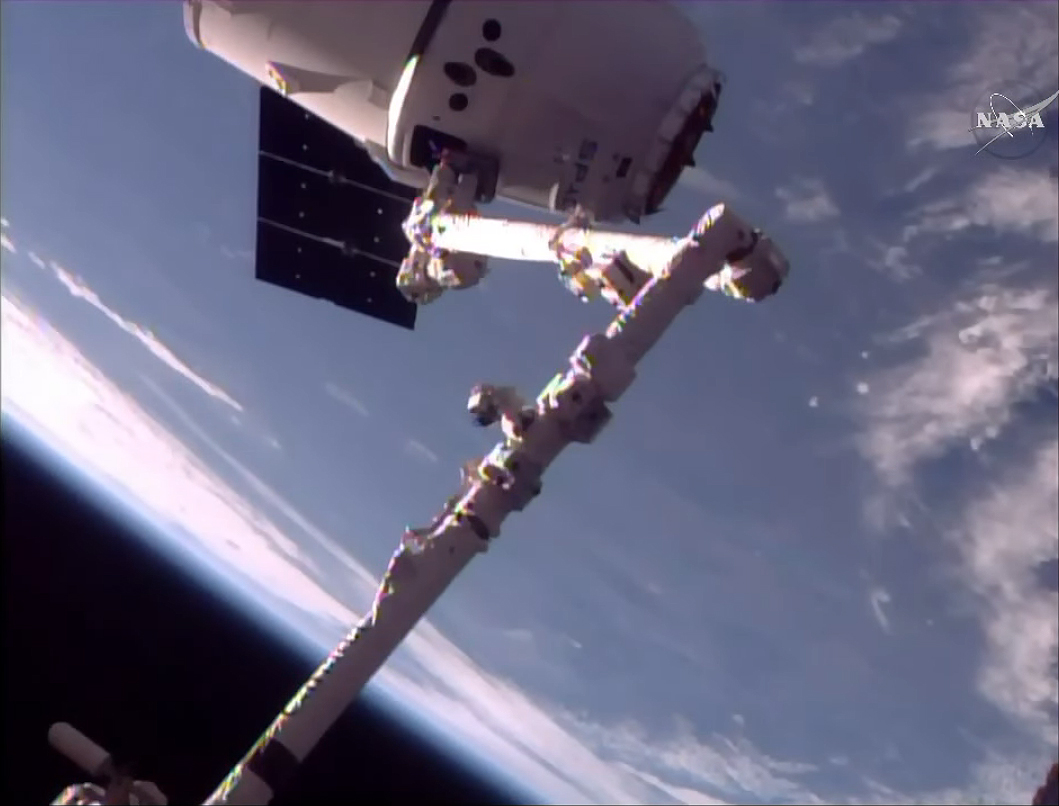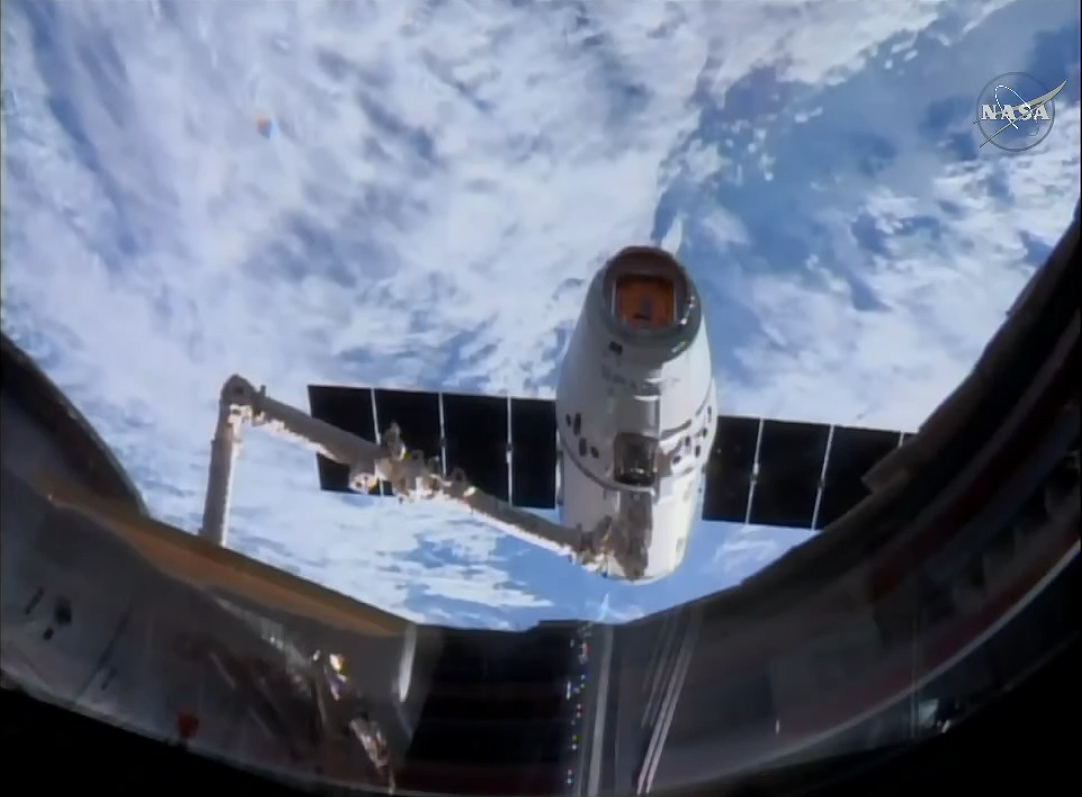SpaceX Dragon Capsule Makes History with 1st Repeat Delivery to Space Station
A reused SpaceX Dragon cargo ship arrived at the International Space Station today (June 5), becoming the first privately built spacecraft to make a repeat delivery to the orbiting laboratory.
The Dragon capsule, which lifted off on Saturday (June 3) from NASA's Kennedy Space Center in Florida, is packed with nearly 6,000 lbs. (2,700 kilograms) of supplies and science experiments for the Expedition 52 and 53 astronauts.
Inside the space station's Cupola module, NASA astronauts Peggy Whitson and Jack Fischer remotely operated the station's Canadarm2 robotic arm to seize the spacecraft at 9:51 a.m. EDT (1351 GMT). [In Photos: SpaceX's 1st Reused Dragon Spacecraft]

With the Dragon captured, NASA's mission controllers in Houston will operate the robotic arm to install the spacecraft at its docking port on the space station's Harmony module, where crewmembers will then unload the cargo.
This is the 11th mission under SpaceX's commercial cargo contract with NASA. In 2014, SpaceX flew the same Dragon capsule for its fourth cargo mission. After the Dragon splashed down in the Pacific Ocean, SpaceX retrieved it and refurbished it so it could be reused.
"These people have supplied us with a vast amount of science and supplies, really fuel for the engine and innovation we get to call home, the International Space Station," Fischer said shortly after capture was confirmed. "We also want to note the special significance of the SpaceX-11, which if we follow the naming convention of the artist Prince, could be called the SpaceX formerly known as SpaceX-4."

Along with food, water and other essentials for the crewmembers, the Dragon contains several thousand pounds of research equipment – and even some live cargo, including 40 mice and thousands of fruit flies. The mice will be testing out a new drug for osteoporosis, or loss of bone density, while the fruit flies will help scientists study the effects of spaceflight on the cardiovascular system.
Get the Space.com Newsletter
Breaking space news, the latest updates on rocket launches, skywatching events and more!
Other equipment onboard includes a new, more compact and efficient solar panel called the Roll Out Solar Array (ROSA), and an experiment that will study a new type of intergalactic GPS system called the Neutron star Interior Composition ExploreR (NICER).
This SpaceX Dragon will stay at the station for about a month and is scheduled to splash down in the Pacific Ocean in early July, returning with about 3,400 lbs. (1,500 kg) of science, hardware and other supplies.
Email Hanneke Weitering at hweitering@space.com or follow her @hannekescience. Follow us @Spacedotcom, Facebook and Google+. Original article on Space.com.
Join our Space Forums to keep talking space on the latest missions, night sky and more! And if you have a news tip, correction or comment, let us know at: community@space.com.

Hanneke Weitering is a multimedia journalist in the Pacific Northwest reporting on the future of aviation at FutureFlight.aero and Aviation International News and was previously the Editor for Spaceflight and Astronomy news here at Space.com. As an editor with over 10 years of experience in science journalism she has previously written for Scholastic Classroom Magazines, MedPage Today and The Joint Institute for Computational Sciences at Oak Ridge National Laboratory. After studying physics at the University of Tennessee in her hometown of Knoxville, she earned her graduate degree in Science, Health and Environmental Reporting (SHERP) from New York University. Hanneke joined the Space.com team in 2016 as a staff writer and producer, covering topics including spaceflight and astronomy. She currently lives in Seattle, home of the Space Needle, with her cat and two snakes. In her spare time, Hanneke enjoys exploring the Rocky Mountains, basking in nature and looking for dark skies to gaze at the cosmos.









